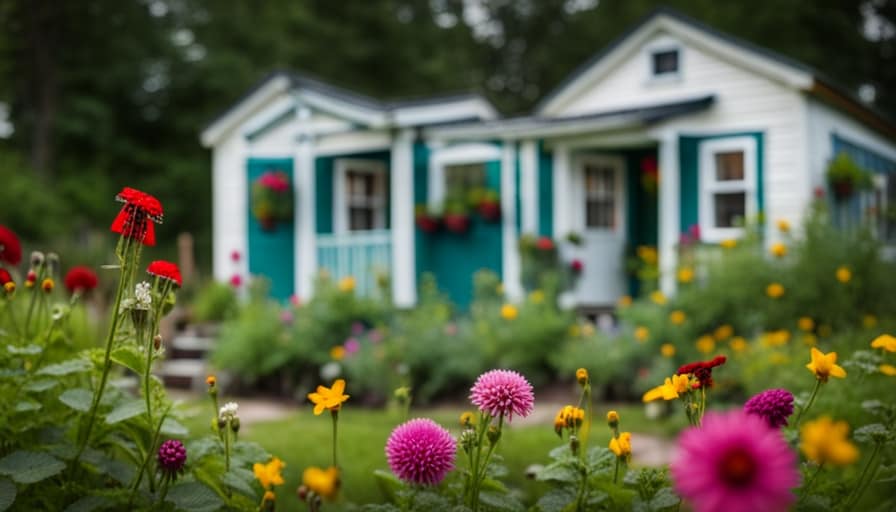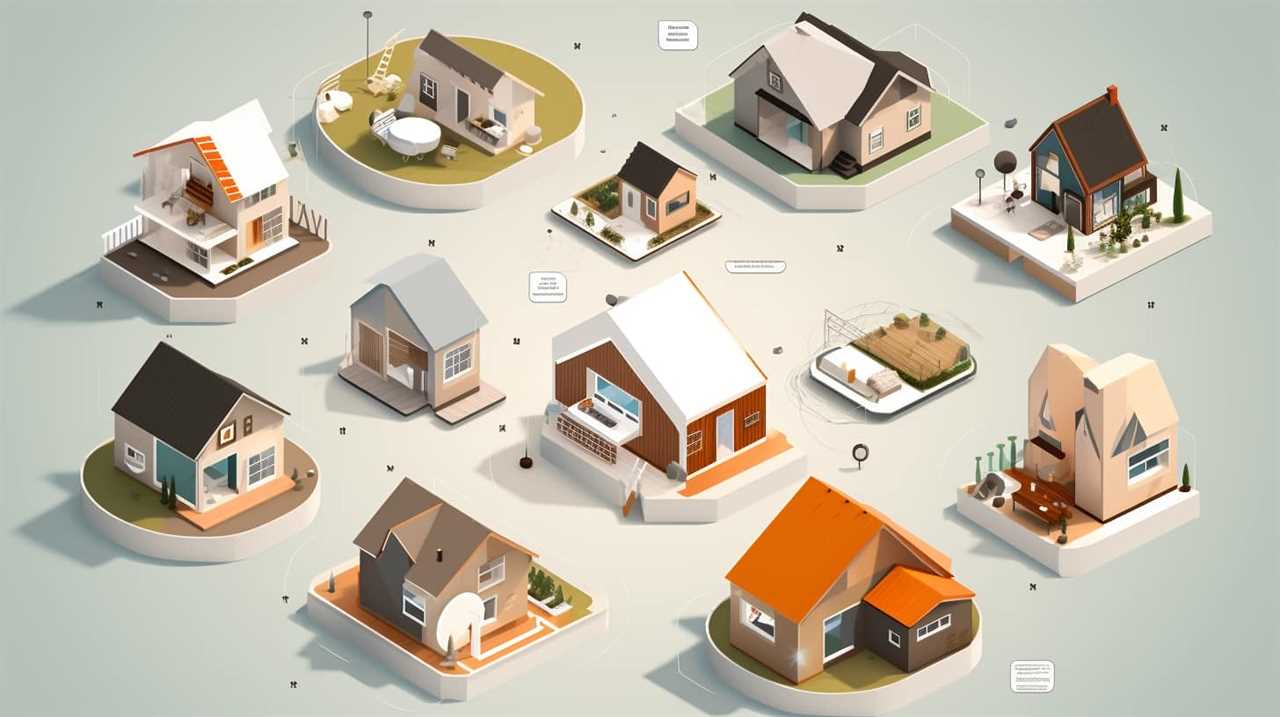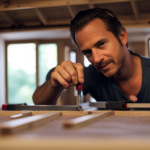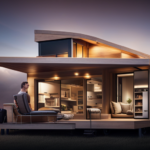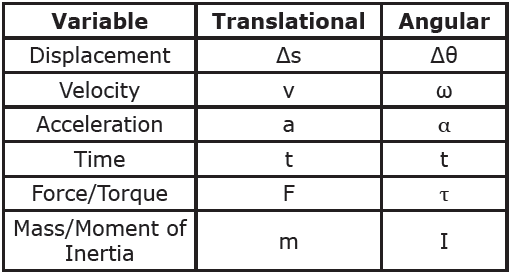As an individual who has always envisioned a warm and minimalistic escape, I frequently pondered, ‘How can I construct a tiny house?’
Let me guide you through the intricate process, step by step. From meticulous planning and design to selecting the perfect location and foundation, we’ll explore the essential tools and materials needed for construction.
Together, we’ll build the sturdy frame and structure, and optimize every inch of space for functional living.
Get ready to embark on a remarkable journey of creating your very own tiny house.
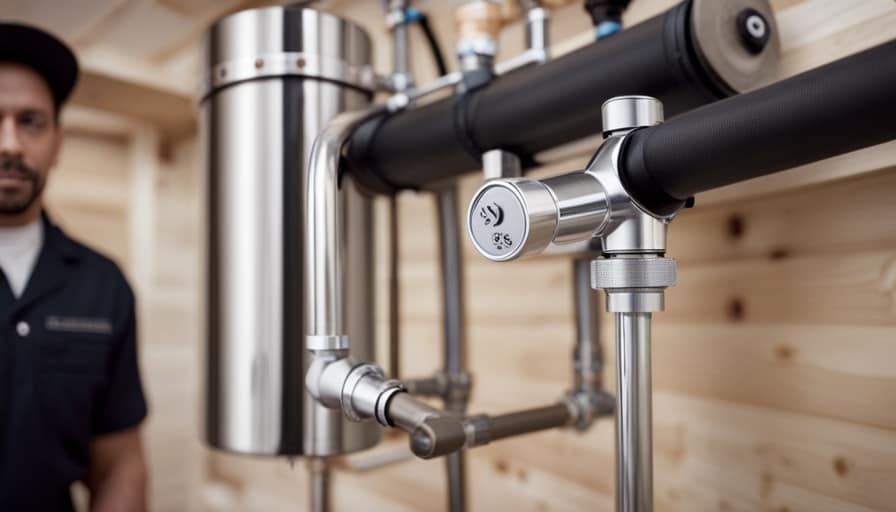
Key Takeaways
- Set a realistic financial plan and stick to it
- Evaluate environmental considerations for the location
- Use essential tools and materials for construction
- Maximize storage and optimize functionality in a limited space
Planning and Designing Your Tiny House
I really enjoy planning and designing my tiny house. It allows me to express my creativity while also considering important factors such as budgeting and financing.
When it comes to budgeting, I make sure to set a realistic financial plan and stick to it. This involves researching the cost of materials and labor, as well as potential additional expenses.
To ensure a sustainable and eco-friendly build, I prioritize using environmentally friendly building materials. This includes options like reclaimed wood, recycled insulation, and energy-efficient appliances. By incorporating these materials into my design, I not only reduce my carbon footprint but also create a healthier living environment.
As I delve into the process of planning and designing, I can’t help but get excited about the next step: choosing the right location and foundation for my tiny house.
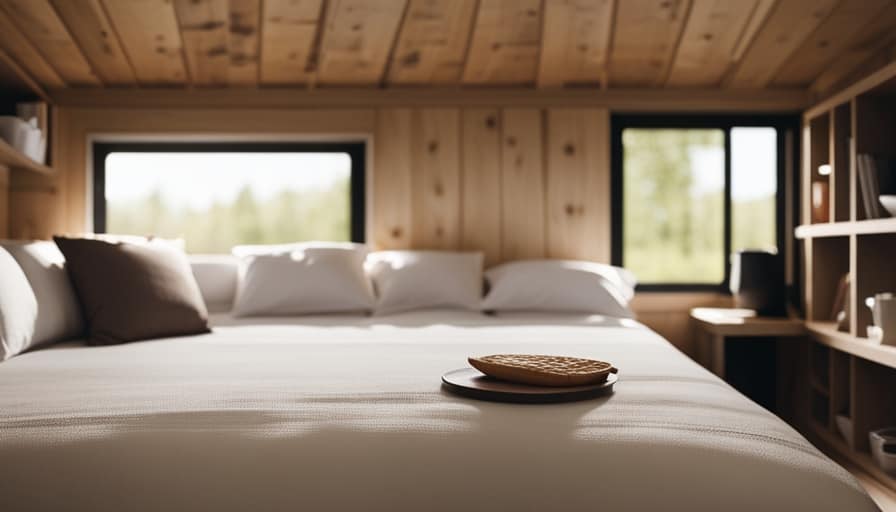
Choosing the Right Location and Foundation
When building a tiny house, it’s important to carefully consider the location and foundation options.
The first step is to evaluate the environmental considerations for the tiny house location. Look for a spot that has ample sunlight for solar panels and isn’t prone to flooding or strong winds. Additionally, consider the proximity to essential amenities like grocery stores, hospitals, and schools.
Next, let’s discuss the types of foundations suitable for tiny houses. One popular option is a trailer foundation, which provides mobility and flexibility. It allows you to easily relocate your tiny house if needed.
Another option is a concrete slab foundation, which offers stability and durability. This foundation is more permanent and requires a solid footing for support.
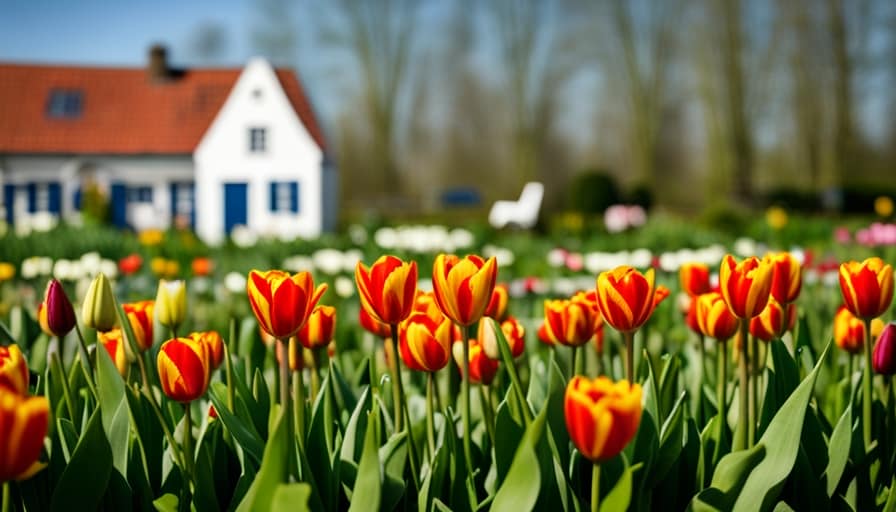
Ultimately, the location and foundation of your tiny house are crucial for its long-term functionality and sustainability. Take the time to research, evaluate, and choose the best options for your needs.
Essential Tools and Materials for Construction
To successfully build a tiny house, you’ll need to gather and organize all the necessary tools and materials for construction. Tool selection and cost estimation are crucial steps in this process. Here is a breakdown of the essential tools and materials you’ll need for building your tiny house:
| Tools | Materials | Cost Estimation (Approx.) |
|---|---|---|
| Hammer | Lumber | $500 |
| Screwdriver | Plywood | $400 |
| Drill | Insulation | $300 |
| Level | Roofing material | $700 |
| Measuring tape | Electrical wiring | $200 |
| Saw | Plumbing pipes | $500 |
| Chisel | Drywall | $300 |
| Clamps | Flooring | $400 |
| Nail gun | Windows and doors | $1000 |
| Paintbrushes | Paint | $200 |
Please note that these cost estimations are approximate and may vary based on location and quality of materials. It is important to thoroughly research and compare prices before making a purchase. By having the right tools and materials, you’ll be well-equipped to begin constructing your tiny house.
Building the Frame and Structure of Your Tiny House
I’ll begin building the frame and structure of my tiny house by laying a solid foundation. This is crucial to ensure stability and durability. I’ll use concrete footings or blocks to create a level and sturdy base.

Next, I’ll construct the floor frame using pressure-treated lumber, ensuring proper support and insulation. Insulating the tiny house is essential to maintain a comfortable temperature inside. I’ll use closed-cell spray foam insulation, which provides excellent thermal performance and helps to reduce energy consumption.
When it comes to plumbing, I’ll carefully plan the layout to maximize space efficiency. I’ll install a water supply system, including pipes, fittings, and fixtures, to ensure a reliable water source. Additionally, I’ll incorporate a wastewater system for proper disposal.
Planning and executing these steps meticulously will result in a well-built and functional tiny house.
Interior Design and Functional Space Optimization
How can I creatively utilize the limited space in my tiny house to optimize both functionality and design? Maximizing storage and finding creative furniture solutions are key to achieving this goal.

Here are some ideas to consider:
-
Built-in storage: Utilize every nook and cranny by incorporating built-in shelves, cabinets, and drawers. This will help keep your belongings organized and minimize clutter.
-
Multi-functional furniture: Invest in furniture that serves multiple purposes, such as a sofa that can transform into a bed or a coffee table with hidden storage compartments.
-
Vertical space utilization: Make use of vertical space by installing wall-mounted shelves, hanging storage organizers, and hooks. This will free up floor space and provide additional storage options.
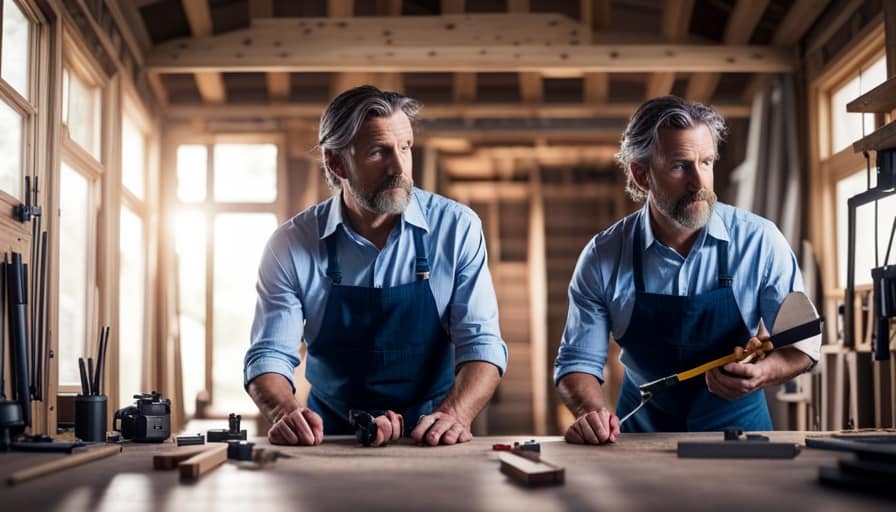
-
Foldable furniture: Opt for foldable tables, chairs, and desks that can be easily stowed away when not in use, creating more room to move around.
Frequently Asked Questions
How Much Does It Cost to Build a Tiny House?
Building a tiny house can vary in cost depending on several factors such as size, materials, and location. However, there are financing options available, such as personal loans or RV loans, to help make your dream of owning a tiny house a reality.
What Permits and Inspections Are Required for Building a Tiny House?
When it comes to building a tiny house, it’s important to understand the permit process and inspection requirements. These steps ensure that your construction is up to code and meets all necessary safety regulations.
Can I Build a Tiny House on Wheels?
Yes, you can build a tiny house on wheels. However, it is important to research and comply with local building codes. The advantages include mobility and flexibility, but there are disadvantages such as limited space and potential challenges with permits and inspections.

Is It Possible to Connect My Tiny House to Utilities Such as Water and Electricity?
Connecting utilities to a tiny house, like water and electricity, can be challenging. However, there are solutions such as hooking up to existing utility lines or using alternative options for off-grid living, like solar power and rainwater collection.
Are There Any Legal Restrictions or Zoning Regulations for Owning and Living in a Tiny House?
In terms of legal implications, owning and living in a tiny house can come with certain restrictions and zoning regulations. It’s important to research and understand the advantages and disadvantages before embarking on this journey.
Conclusion
In conclusion, building a tiny house requires careful planning, designing, and construction. By considering factors such as location, foundation, and materials, you can create a functional and efficient living space.
With the right tools and techniques, you can successfully build the frame and structure of your tiny house.
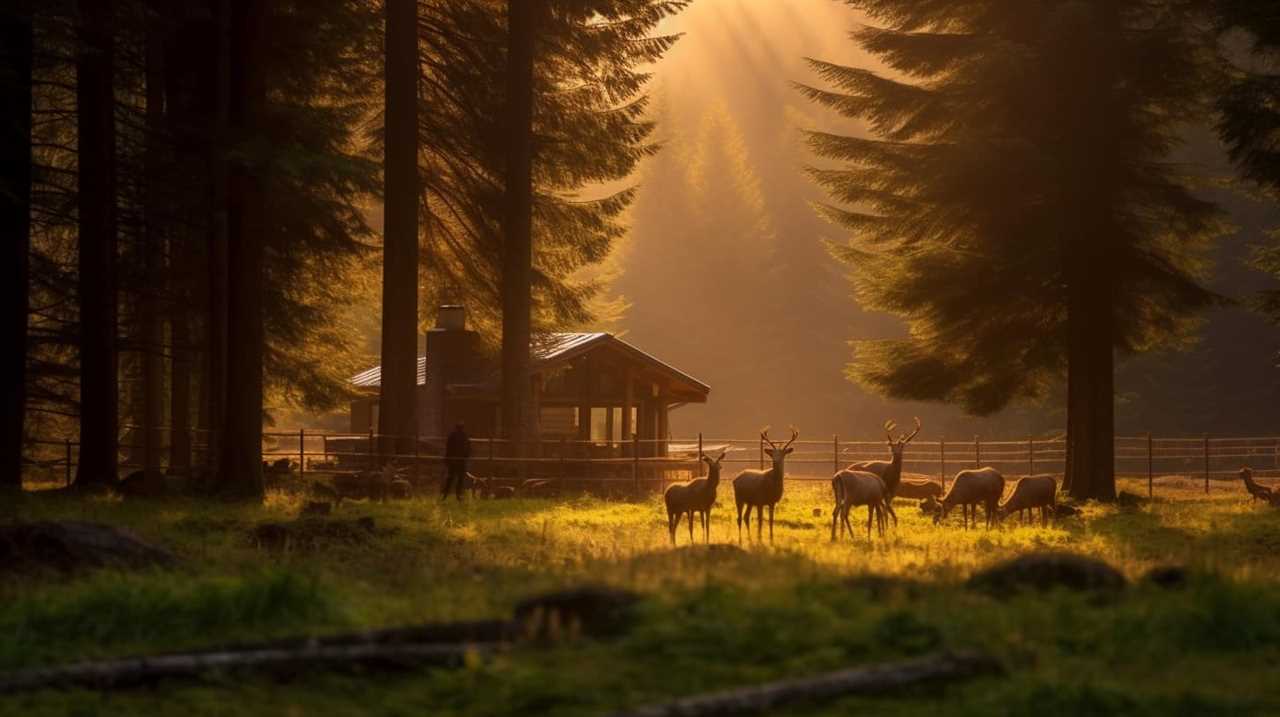
Lastly, don’t forget to optimize the interior design and functional space to maximize comfort and functionality.
So, are you ready to embark on this exciting and rewarding journey of building your very own tiny house?
I’m Theodore, and I love tiny houses. In fact, I’m the author of Tiny House 43, a book about tiny houses that are also tree houses. I think they’re magical places where imaginations can run wild and adventures are just waiting to happen.
While tree houses are often associated with childhood, they can be the perfect adult retreat. They offer a cozy space to relax and unwind, surrounded by nature. And since they’re typically built on stilts or raised platforms, they offer stunning views that traditional homes simply can’t match.
If you’re looking for a unique and romantic getaway, a tree house tiny house might just be the perfect option.
